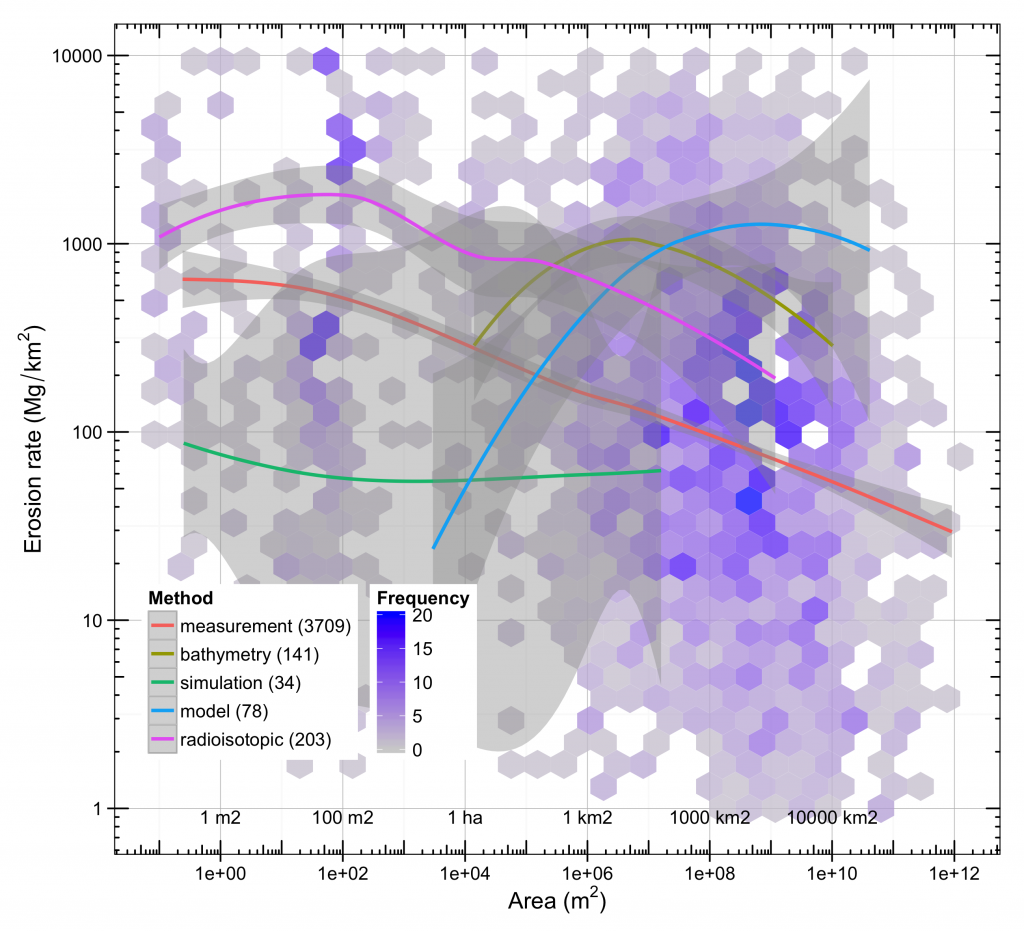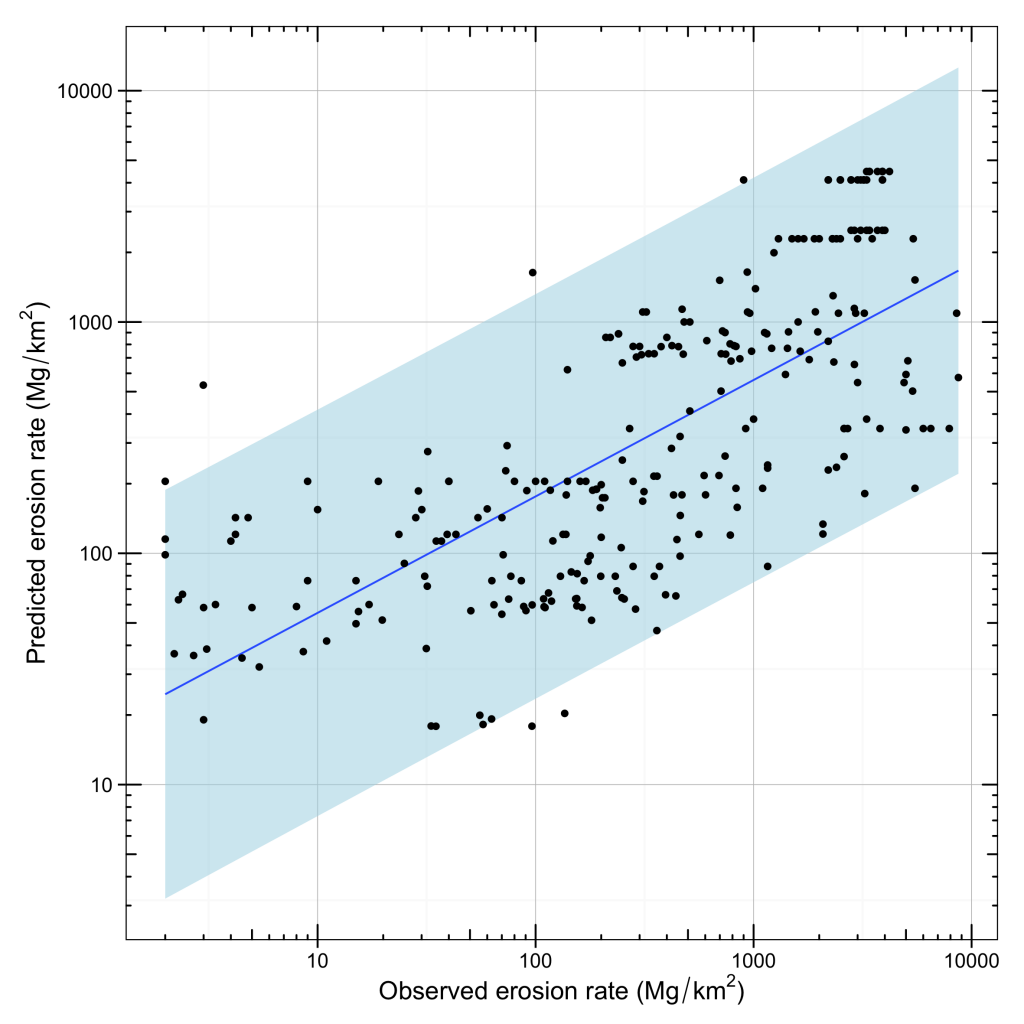Soil erosion is a major environmental problem, since it affects our ability to produce food and the sustainability of many ecosystems. Over the last century extraordinary efforts were devoted to determining soil erosion rates (in units of mass per area and time), under a large range of climatic conditions and land uses, and involving various measurement methods. We undertook a meta-analysis of published data from more than 4000 sites worldwide, in order to see wether general conclusions can be drawn from these data. The results show that there is extraordinarily high variability in erosion rates, with almost any rate apparently possible irrespective of environmental characteristics such as slope gradient, climate, scale, land use/land cover, etcetera.

However, detailed analysis revealed a number of general features including positive relationships of erosion rate with slope and annual precipitation, and a significant effect of land use, with agricultural lands yielding the highest erosion rates, and forest and shrublands yielding the lowest.
Despite these general trends, there is much variability that is not explained by this combination of factors, but is related, at least partially, to the experimental conditions. Our analysis revealed a negative relationship between erosion rate and the size of the study area involved; significant differences associated with differing measurement methods, with direct sediment measurement yielding the lowest erosion rates, and bathymetric, radioisotope and modeling methods yielding the highest rates; and a very important effect of the duration of the experiment. Our results highlight that, when interpreting erosion rates, the experimental conditions involved must be taken into account.
Even so, the data suggest that only order of magnitude approximations of erosion rates are possible, and these retain a very large degree of uncertainty.
Our results also show that a large proportion of the experiments have been short-term (less than 3 years), which reduces dramatically the reliability of the estimated erosion rates, given the highly non-normal behavior of soil erosion (time-dependency). Despite the efforts already made, more long-term measurement experiments need to be performed, especially in regions of the world that are under-represented in global datasets.
In addition, protocols need to be established for standardizing the measurement methods and reporting the results, to enable data to be compared among diverse sites.
This study has been published in:
García-Ruiz JM, Beguería S, Nadal-Romero E, González-Hidalgo JC, Lana-Renault N, Sanjuán Y. A meta-analysis of soil erosion rates across the world. Geomorphology 239: 160–173 (2015) (doi: 10.1016/j.geomorph.2015.03.008)



We need a lot more inghtiss like this!